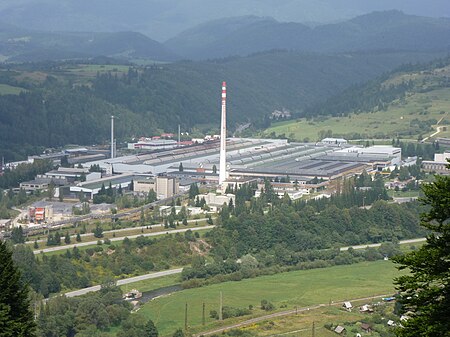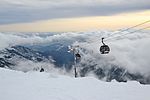Slovakia ( ; Slovak: Slovensko [ˈslɔʋenskɔ] ), officially the Slovak Republic (Slovak: Slovenská republika [ˈslɔʋenskaː ˈrepublika] ), is a landlocked country in Central Europe. It is bordered by Poland to the north, Ukraine to the east, Hungary to the south, Austria to the west, and the Czech Republic to the northwest. Slovakia's mostly mountainous territory spans about 49,000 square kilometres (19,000 sq mi), hosting a population exceeding 5.4 million. Bratislava serves as the capital and largest city, while the second largest city is Košice.
The Slavs arrived in the territory of the present-day Slovakia in the 5th and 6th centuries. From the late 6th century, parts of modern Slovakia were incorporated in the Avar Khaghanate. In the 7th century, the Slavs played a significant role in the creation of Samo's Empire. In the 9th century, the Avar Khaghanate dissolved, and the Slavs established the Principality of Nitra, which was later conquered by the Principality of Moravia, leading to the formation of Great Moravia. In the 10th century, after the dissolution of Great Moravia, the territory was integrated into the Principality of Hungary, which then became the Kingdom of Hungary in 1000. In 1241 and 1242, after the Mongol invasion of Europe, much of the territory was destroyed, but was recovered largely thanks to Béla IV.
After World War I and the dissolution of Austro-Hungarian Empire, the state of Czechoslovakia was established, incorporating Slovakia. In the lead up to World War II, local fascist parties gradually came to power in the Slovak lands, and the first Slovak Republic was established as a puppet state under the control of Nazi Germany. The local Jewish population was heavily persecuted, with almost 70,000 Jews being murdered or deported. Internal opposition to the fascist government's policies culminated in the Slovak National Uprising, itself triggered by the Nazi German occupation of the country. Although the uprising was eventually suppressed, partisan resistance continued, and Czechoslovak independence was re-established after the country's liberation at the end of the war.
Following the Soviet-backed coup of 1948, Czechoslovakia became a communist state within the Eastern Bloc and a satellite state of the Soviet Union. Attempts to liberalise communism culminated in the Prague Spring, which was suppressed by the Warsaw Pact invasion of Czechoslovakia in August 1968. In 1989, the Velvet Revolution peacefully ended Communist rule in Czechoslovakia. Slovakia became an independent state on 1 January 1993 after the peaceful dissolution of Czechoslovakia, sometimes known as the Velvet Divorce.
Slovakia is a developed country with an advanced high-income economy. The country maintains a combination of a market economy with a comprehensive social security system, providing citizens with universal health care, free education, and one of the longest paid parental leaves in the OECD. Slovakia is a member of the European Union, the Eurozone, the Schengen Area, the United Nations, NATO, CERN, the OECD, the WTO, the Council of Europe, the Visegrád Group, and the OSCE. Slovakia is also home to eight UNESCO World Heritage Sites. The world's largest per-capita car producer, Slovakia manufactured a total of 1.1 million cars in 2019, representing 43% of its total industrial output.








